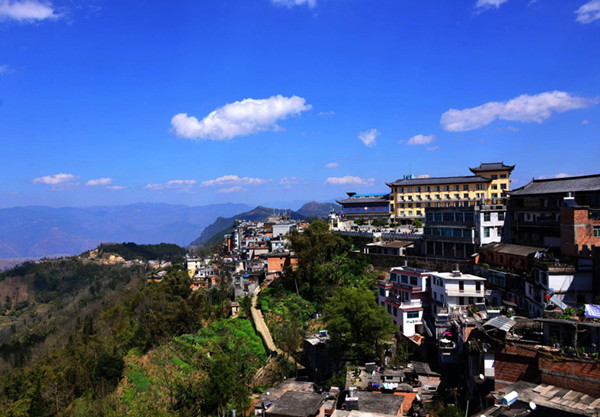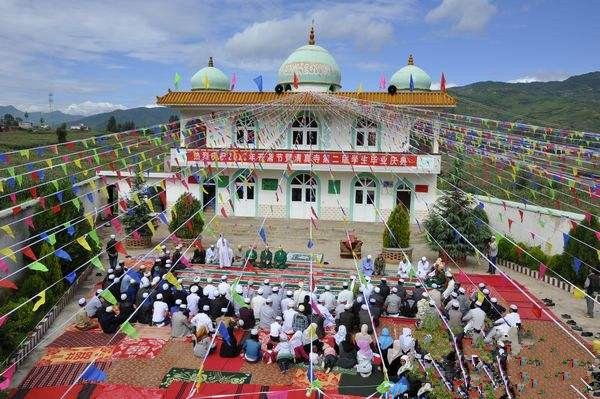Xinjie Town of Yuanyang County, Honghe
Chinese Name: 元阳县新街镇
English Name: Xinjie Town in Yuanyang County, Honghe
Keywords: Hani folk culture and buildings, the terraces
Location: located in the center of Yuanyang County
Admission Fee: ¥0
Opening Hours: All Day Long
About Xinjie Town in Yuanyang County
I. Basic Information
-
Geographical Location and Area
Xinjie Town is located in the central part of Yuanyang County, between 102°0′ and 102°49′ E longitude and 23°05′ and 23°14′ N latitude, within Honghe Hani and Yi Autonomous Prefecture, Yunnan Province. Covering an area of approximately 234.33 square kilometers, the town features a terrain of valleys, hills, and terrace fields, with rivers such as Zhenna River and Mali Zhai River meandering through, creating a unique natural landscape. -
Administrative Division and Population
Xinjie Town administers 2 communities (Datian Street Community and Xiajie Street Community) and 10 village committees, forming a complete grassroots administrative system. According to Wikipedia, the town has a total population of about 65,819 people, with a population density of approximately 281 persons per square kilometer. Prior to 1998, Xinjie Town even served as the county government seat, reflecting its historical and administrative significance. -
Historical Development
With a long history, Xinjie Town played an important role in political, economic, and cultural activities in Yuanyang County. In the early years following the founding of the People’s Republic of China, the town was pivotal in organizing land reform and socialist construction. Although the county government moved to Nansha Town after 1998, Xinjie Town still retains rich historical and cultural heritage as well as strong ethnic traditions.
II. Tourism Resources and Highlights
-
The Splendor of the Hani Terraces
Xinjie Town is adjacent to the world heritage site of the Honghe Hani Terraces. The cascading terraces, which follow the contours of the hills, create a poetic landscape whether bathed in the morning light or the glow of sunset. Visitors can enjoy the spectacular views up close and experience the seamless integration of nature and human ingenuity that is emblematic of these terraces. -
Ethnic Culture and Traditional Experiences
The town is home to multiple ethnic groups, including the Hani and Yi peoples, who have preserved a wealth of traditional festivals, folk songs, and handicrafts. Certain villages (such as Azheke Village) have leveraged their terrace culture to develop rural tourism. Notably, these villages have received international recognition—for instance, being rated as “World’s Best Tourism Villages” by the United Nations World Tourism Organization Executive Committee—thus attracting visitors interested in ethnic customs and authentic rural life. [sinowh.org.cn] -
Experiential Tourism and Interactive Activities
Beyond sightseeing, Xinjie Town offers a variety of experiential tourism projects, including:-
Agricultural Experiences: Visitors can participate in terrace farming, learn about traditional irrigation methods, and gain insight into the “unity of man and nature” that underpins the Hani terraces.
-
Cultural Activities: Regular events such as Hani folk song performances, traditional festivals, and handicraft workshops allow tourists to engage directly with local customs.
-
Homestay Experiences: Many traditional villages have been renovated into boutique homestays that maintain the original architectural features while incorporating modern design elements, offering a comfortable stay infused with historical and cultural charm.
-
III. Tourism Development and Rural Revitalization
-
The “Azheke Plan” and Shared Benefits
Local authorities, in collaboration with experts from institutions like Sun Yat-sen University, have introduced the “Azheke Plan.” This initiative, which focuses on housing, people, and land, establishes a mechanism for sharing tourism revenues. As a result, income generated by the terraces, traditional dwellings, and other tourism assets is distributed among local residents, thereby driving sustainable economic development and rural revitalization. -
Ecotourism and Sustainable Development
With an emphasis on ecological protection and the preservation of agricultural heritage, Xinjie Town is actively exploring a tourism model that combines “terrace tourism + ethnic culture.” By restoring traditional irrigation systems, safeguarding intangible cultural heritage, and developing eco-friendly tourism, the area not only attracts numerous visitors but also spurs growth in sectors such as agricultural processing and cultural creative industries, achieving a win-win situation for both the economy and culture. -
Diverse Tourism Experiences
Whether one is an adventurer and nature lover or someone who appreciates ethnic customs and traditional handicrafts, Xinjie Town offers a wide range of tourism experiences. From hiking and exploration to homestay relaxation and cultural workshops, the town is steadily evolving into a comprehensive tourism destination that integrates nature, culture, and leisure.
Yuanyang County’s Xinjie Town not only boasts deep historical and cultural roots and abundant agricultural resources but also offers unique natural landscapes and terrace views that provide ideal conditions for rural tourism. With innovative initiatives such as the “Azheke Plan,” the town is exploring new pathways to combine terrace tourism with ethnic cultural heritage, driving both ecological preservation and rural revitalization. Whether you are a photography enthusiast, a nature explorer, or a cultural traveler, Xinjie Town offers a unique blend of poetry and adventure waiting to be discovered.
This comprehensive introduction presents both the essential background and the tourism highlights of Xinjie Town, showcasing its unique charm as a destination where natural beauty, cultural heritage, and innovative tourism development converge.














